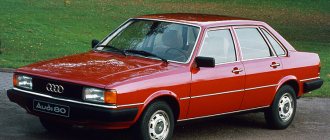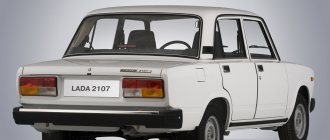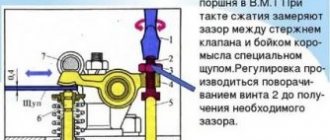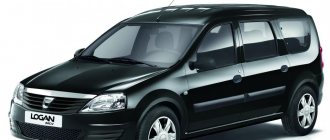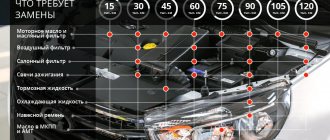VAZ-2110 is a middle-class passenger car produced by a Russian automobile company. The car debuted in 1995 as the successor to the famous Samara, although it was produced until 2015. The car appeared on the domestic market as the VAZ 2110, and only after 2004 was introduced in Russia as the Lada 110.
The Russian sedan Lada Priora (2170) is another hope for success in the domestic market. Even the Russian professional press was not immediately able to accurately determine the differences compared to the previous model. Initially, unofficially, one of the manufacturer’s representatives described the car as “a deep restyling of the 2110, which is very close to the original.” The suspension and braking system were changed, the body received new contours, although the doors remained the same.
Technical features of the models
VAZ 2110 has a 4-door body. Its “sisters” are presented under the brands 111 (station wagon, until 2004 in Russia – VAZ 2111) and 112 (hatchback, until 2004 in Russia – VAZ 2112). The body design is quite rough and boring. The car looks heavier than it actually is. However, despite its small size, the interior is relatively spacious. The quality of the materials used and their fit leave much to be desired, but the price for which you can buy a VAZ 2110 compensates for any inconvenience.
Lada Priora has excellent sound insulation. If we compare acoustic comfort with a VAZ 2110, then in the Priora gearbox the noise is almost inaudible, and everything else has also become noticeably quieter. The difference in engines is even more noticeable. The 10's engine was far from ideal, so its volume was increased to meet stricter emissions standards (at that time Russia introduced an "obligation" to comply with at least the outdated Euro-2 standard).
The engine has not been modernized in the most successful way, so 16 valves are effective only at medium speeds and downright slow in other situations. The difference between the 8- and 16-valve “tens” engines is insignificant.
For comparison, Priora has a more advanced VAZ-21126 engine, which not only rotates faster and is quieter, but is also much more dynamic at high speeds, which was lacking in older analogue engines. Separately, it is necessary to highlight the energy intensity of the suspension - on a bad road you can drive at a higher speed without much damage to the car. It is very difficult to break the suspension of a Priora.
Priora or VAZ 2110: comparison of cars and which is better
When buying your first car, experienced motorists advise choosing AVTOVAZ. The domestic brand is ready to offer its customers fairly high-quality vehicles at a competitive price. Among the entire model range, two cars stand out: Lada Kalina and VAZ 2110. But which one is better? A detailed review of each option and their comparison will help answer this difficult question.
Lada Priora
This car was released relatively recently and has already earned the respect and sympathy of car owners throughout the country.
To get to know Priora better, it’s worth taking a look at its strengths:
- Appearance. One of the main strengths that ensured Lada good sales. Judging by the design, we can say that this is a man's car. Features from the Granta are noticeable in the front fenders and hood. Other elements, such as the front bumper, radiator grille and optics, are new. Thanks to its unique external features, Priora stands out clearly in the city traffic, attracting attention.
- Suspension. There are also slight similarities with previous models. This fact gives the buyer absolute confidence in the quality of the suspension, because the products of the VAZ plant have always been distinguished by their indestructibility and ability to overcome even the most difficult obstacles. Based on this, we can say with confidence that Priora will feel great on our roads.
- New control panel. The new panel cannot be called domestic in any way. The standard European design is clearly visible here. The panel has become more attractive and has acquired new functions.
VAZ 2110
The top ten can easily be attributed to the old VAZ line, but interest in it has not dropped.
Thanks to a large number of positive qualities, it continues to interest beginners and experienced drivers:
- Appearance. This model is practically the most beautiful in the entire family. Unique lines create a beautiful silhouette that immediately catches the eye.
- Patency. Cross-country ability is at a fairly high level. Despite its size, it has a ground clearance of 170 mm, which is why the car is able to overcome small holes and ground clearances. Along with this, there is a powerful 78 hp engine. s, thanks to which the car is capable of reaching speeds of up to 170 km/h.
- Salon. Everything looks pretty simple, but that's not the point. For a relatively small fee, the buyer can get good quality interior elements that will definitely not break in the first year of operation. They are made of strong plastic and have no joints. The dashboard is slightly angled towards the driver, which adds to the comfort.
- Possibility of additional tuning. This factor provided the car with additional sales. Most young drivers prefer the ten precisely because of the possibility of tuning.
What do cars have in common?
There are many common qualities between cars from the same manufacturer, for example:
- Excellent build quality . The machines can be operated for a long period of time without maintenance.
- Since the manufacturer is located in Russia, there should be no problems finding parts.
- Easy maintenance . The VAZ brand is the most common, so any service station is ready to provide its services to the owners of such cars.
- Excellent suspension and ride quality . Large ground clearance and a powerful engine make you feel comfortable on our roads.
- Affordable price.
Comparisons and differences
If you sit in the interior of the VAZ 2110, you will notice that its interior is quite old-fashioned . This is not a significant disadvantage, because every detail is made well.
It is worth paying attention to the large dashboard buttons, which are reminiscent of the interior of an Audi or Citroen. According to the designers, this detail was supposed to introduce something new into the overall environment.
However, the idea was expected to fail, because the ten's steering wheel is so large that it blocks the button indicators, which can cause disorientation for the driver.
A distinctive feature of Priora is its strong body, which has become 40% stiffer. This factor makes itself felt while driving on the road. The car behaves rather clumsily, but still responds well to driver inputs. There is a hydraulic booster that makes driving easier.
Compared to its competitor, Lada Priora has a more sophisticated sound insulation system . While driving, the noise is practically inaudible. Significant differences are observed in the engines. The Priora has a 98 hp engine, which is capable of accelerating the car to an impressive speed. The ten comes out as a loser, because it has 78 hp.
It is also worth mentioning the presence of gaps between body panels . The VAZ 2110 has serious problems with this. The gap width can reach 2 cm, which is prohibitively large. This factor negatively affects the driving performance of the vehicle. Priora can be considered a success, because there are no gaps observed. Every element of the body is worked with high precision.
Making a choice
To summarize, we can say that the Lada Priora is the clear winner . This car allowed AvtoVAZ to take a confident step forward and attract the attention of new buyers.
It has a fairly modern appearance and a relatively powerful engine that will make you feel comfortable in city traffic.
Recommended for purchase by young men who can afford a little comfort and speed.
The VAZ 2110 has rather mediocre technical and driving qualities. However, it is worth saying that in everyday life the top ten has no equal. It is easy to maintain and repair, can carry small loads, which is suitable for trips to the country. It has a low cost and quite comfortable seats.
Source: https://vchemraznica.ru/priora-ili-vaz-2110-sravnenie-avtomobilej-i-chto-luchshe/
Appearance
A significant problem with the VAZ 2110 is floating gaps. This is especially noticeable when the hood comes into contact with the doors and fenders. Sometimes even several fingers can fit into the gap. This is a disease of all VAZs from the “ten” family. AVTOVAZ tried to modify the design - in the mid-2000s, the car only received a new bumper.
VAZ Priora
The wear resistance of the body of the Lada 110 is quite poor. The coating is impervious to salt, water and road chemicals. Rust appears after two years of use. Door sills and bottoms also quickly corrode and rot.
The most important shortcomings in domestic cars of previous generations remain the gaps between body parts. The external body parts of the Priora were redesigned, which resolved most of these problems. The differences are especially noticeable by the lack of contact between the C-pillar and the fender, which was previously covered by a curved plate. It was also possible to almost halve the distance from the new trunk lid to the car body.
Priora or ten
#1 Evgeniy111
- Users
- 1 messages
- Car make: 2112+ Hyundai Getz (successfully crash tested)
- From: Volzhsky, Volgograd region
#2 andrey-gms27
- VIP Member
- 1,519 messages
- Car make: 2114
- From: Novosibirsk
View Garage P.S. Well, that’s what kind of people we have))))) I haven’t had time to buy it yet, you’re already talking about THAT. Don’t worry about it, ride to your health, do TO1 TO2. There is nothing terrible about it and it is not expensive. You yourself say that “the car is for 2 years, and then we’ll see” - that means you think that the car will need to be “sold well” someday, and the entries in the service book will once again confirm to the buyer your decency and honesty.
IMHO 100 times - do not interfere with the machine’s work.
#3 110
- Car make: Lada
- From: Tolyatti
Well, since the topic here is about FIRST impressions, then I will allow myself to post my impressions from 06/01/08. I was impressed together with my wife, her comments were also included in the description. First, from myself personally, point by point:
Pros: 1.Powerful, dynamic, high-torque and economical engine. 2.Electrically adjustable mirrors in the base. 3.Climate system.
Cons: 1. "Updated" design - "Look-eyed Ten" - Priora headlights were outdated long before the model began selling. 2.Soft central part of the pillow in front. seats, despite the presence of lateral support. You sit down and “fall to the floor.” 3. The armrest VERY interferes with changing gears and using the handbrake, even in the reclined position, the elbow hits it when turned on. 2-4 gears. 4. Gear shifting is fun and stumbling. 5. “Long” (3.9 turns instead of 2.9) steering rack. 6.Blind-sighted, with small digitization (after 2110) tidy. 7.Low-mounted, slippery handles (after 2110) exercise. climate. 8. Doors that rattle, like on the Tens, despite the anti-noise bolts. 9. Creaking TIIR brake pads (both on Tens and Kalinas) ——————————————————————————————————— ——- Now the EMOTIONAL impression of BOTH: Priora — SCOOP! The doors close like a hammer to the head, you flinch! IT'S CROSSER INSIDE THAN "TEN"! The steering wheel is lower, the doors are thicker, that poor armrest on the right is too tight, the updated seats are narrower than tenths. At 185 cm tall, you have to push the seat all the way back, pinching the rear passengers, and despite this, when you move your right foot from the gas to the brake, the steering column and steering wheel get in the way! In the Ten with seat adjustment, there is still a margin of two clicks and there is more freedom for the legs, elbows, and the back of the person. sits freely. They mutilated the ergonomics of the Dozens - they got a Priora! The interior door handles are painted one silver color (matte and dark), and the console is painted another, shiny and light. And about the front headlights - CHINA, damn it! And the stench in the cabin is CHINA, damn it! But the upholstery of the seats with the already creased backrest (with a mileage of 15 km) is made of velvet (artificial), and the screws stick out in the niches of the door handles - in general, a HORRIBLE thing from the last century! But the engine is super, with the sound of an old Oka from the exhaust!
Expensive . LAYOUT of a modern car. It's a pity! It’s frankly offensive to receive such impressions. A new model that you do NOT want to exchange your 21101 for. Only the comfort of the climate system attracts. ————————————————————————— I’ll add a little about the POSSIBLE jambs of car unreliability: 1. Problems with the ESD - self-steering and shutdown. 2. Problems with idle stability - sometimes it stalls when switching to neutral. 3.Corrosion of the body in places where chrome touches. linings for the hood and trunk lid and the linings themselves. 4. Sagging doors with the top corner of the front door touching the back door - chipping of the paint. 5. Weak support bearings, on average, after 7-12 thousand, knocking noises appear and must be replaced by 20 thousand.
Salon and trunk
The interior of the VAZ 2110 looks unprepossessing and stern. What's immediately noticeable is the simple two-spoke steering wheel without an airbag and the conventional dashboard with a few buttons. There are large buttons on the side of it, and there are large gaps in the center console. Ten does not support the required set of options compared to modern analogues. Only a clock, a stove, a niche for a radio and a 12-volt cigarette lighter with backlight are available. Only two people can comfortably fit in the back.
Depending on the configuration, the car provides:
- air conditioner;
- electric windows;
- central locking.
According to user reviews, the main disadvantage of the model is isolation. The coating is very hard and constantly crunches. The car won't be perfectly quiet, but you can eliminate most of the noise with additional sound insulation. The trunk volume of the VAZ 2110 is 450 liters.
VAZ employees would not be themselves if they had made a Priora without flaws. The car is like a “rattle” - the door cards, the rear parcel shelf, the whistle from the door seals, the suspension (albeit in good condition) - everything rattles with different frequencies and volumes.
The body parameters in the new model remained the same, but the seats in the Priora became 15-30 mm higher. Passengers and the driver who are taller than average will not feel very comfortable. Priora owners have every chance to give up such a bad habit as smoking. Using an ashtray in a car is very difficult, but it snaps into place much better!
VAZ Priora salon
The trunk volume of the Priora sedan is 430 liters, the hatchback – 400 liters. The total length of the sedan is 4350 mm. (hatchback is 140 mm shorter), width – 1680 mm, height – up to 1508 mm. with a wheelbase of 2492 mm. The car is equipped with 14-inch wheels with 185/65 R14 tires.
Additional information about the VAZ 21126 Lada Priora engine
The VAZ 21126 engine was developed simultaneously with the VAZ 11194 internal combustion engine. Despite the different displacement of these models, most engine components and systems are the same.
One of the main tasks when creating these engines was to achieve a significant increase in the service life of the main components. The VAZ 21124 internal combustion engine was taken as the basis. The use of new technologies and design solutions allowed the manufacturer to set the engine life to 200 thousand km. The cylinder diameter of the VAZ 21126 engine is 82 mm. The block height is 197.1 mm (distance from the axis of rotation of the crankshaft to the upper plane of the cylinder block). Structurally, it is no different from the 11193-1002020 block used on the VAZ 21124 engine. The main difference between the VAZ 21126 block is the quality of the cylinder wall processing.
Cylinder honing is carried out using Federal Mogul technology, which ensures better working surfaces. The block received a new index - 21126-1002020. To avoid confusion, the block has the appropriate markings and is painted gray. For the cylinder diameters of block 21126, three classes of sizes are defined in increments of 0.01 mm (A, B, C). The cylinder class marking is made on the bottom plane of the block.
The engine uses crankshaft model 11183-1005016. In terms of mounting dimensions, the shaft corresponds to the VAZ 2112 shaft. But the 11183 crankshaft has an increased crank radius - 37.8 mm, and the piston stroke - 75.6 mm. To distinguish it, there is a marking on the cheek of the counterweight - model “11183” is indicated. The crankshaft gear pulley is original and has the index 21126.
The pulley tooth profile is designed for a timing belt with a semicircular tooth. To prevent the belt from slipping, the pulley has a flange (belt) on one side and a special washer is installed on the other side. A model 2112 damper is installed on the shaft to drive the generator and attachments. The crankshaft damper (pulley) is combined with a drive gear disk. The toothed disc allows the sensor to track the position of the crankshaft.
To drive the generator (and power steering pump), a poly V-belt 2110-1041020 – 6РК1115(1115mm) is used. On engines without an installed power steering pump, a belt 2110-3701720 - 6RK742 (742mm) is used. If an air conditioner is installed on the car, then a belt 2110-8114096 - 6РК1125(1125mm) is used to drive these units.
New Lada: Lada Priora weak points • ALL about used AVTO
The development of the connecting rod and piston group was carried out by the German company Federal Mogul. A new lightweight design was developed. The weight of the piston-rod-pin set has been reduced by more than 30% compared to the 2110 set.
The nominal piston diameter is 82mm. The piston height has decreased. The use of thinner piston rings manufactured by Federal Mogul is provided. There are four shallow holes on the bottom of the piston. The hole for the connecting rod pin is offset from the piston axis by 1.0 mm. The diameter of the hole for the piston pin is 18mm.
The connecting rod is made thinner and the sides of the lower end of the connecting rod do not have contact with the crankshaft. This design made it possible to significantly reduce friction losses. When installing, the accuracy classes of the pistons must correspond to the classes of the block cylinders. The class marking is located on the bottom of the piston.
The 11194 connecting rod has a lightweight, extended design and is manufactured using new technology. The length of the connecting rod is 133.5 mm. The connecting rod cap is made by breaking part of the connecting rod blank. The combination of surfaces obtained in this way allows, by joint processing of two parts of the connecting rod, to achieve high accuracy for the hole for the connecting rod journal of the shaft.
Piston rings are 82mm. The rings installed on the new pistons are “thinner” in comparison with traditional VAZ ones. Ring height: 1.2mm – upper compression, 1.5mm – lower compression, 2mm – oil scraper.
The outer diameter of the piston pin 21126 is 18 mm, length is 53 mm.
The cylinder head 21126-1003011 is sixteen-valve and differs from the mod. 2112 with an enlarged platform on the front surface of the head to accommodate a new timing belt tensioning mechanism.
Camshafts, valves, springs and hydraulic tappets remain from the 2112 engine.
Hydraulic valve tappets automatically compensate for gaps in the valve drive, which makes it possible not to adjust the gaps in the valve mechanism during operation.
The engine uses a new automatic timing belt tensioning mechanism with rollers of a new design. By switching to a Gates timing belt with a new profile, the engine uses new camshaft pulleys, a water pump pulley and a crankshaft pulley. The pulley profile corresponds to a timing belt with a semicircular tooth.
Gates timing belt 76137 x 22 mm (137 semicircular teeth). Width 22 mm. For a timing belt, the manufacturer has determined a resource of 200 thousand km.
New Lada: Tuning VAZ 2172 Lada Priora Nika (Lada Priora Nika) buy inexpensively with delivery to “Ne_vybran”
To drive the camshafts, original toothed pulleys are used. The pulleys are marked with a circle-shaped mark. On the intake pulleys, one circle is applied to the left of the alignment mark near the teeth. The exhaust pulley is marked with two circles to the left and right of the installation mark, near the teeth.
A special two-layer metal cylinder head gasket with a thickness of 0.43 mm (21126-1003020) and with holes for cylinders with a diameter of 82 mm is used.
A new cat collector design (11194-1203008) is installed on the engine. Compared to engine 21124, the diameter of the converter has been increased. For modification designed to comply with Euro 3 toxicity standards, the installation of a catalytic collector model 11194-1203008-10 (11) is required. The catcollector model 11194-1203008-00(01) ensures compliance with Euro-4 standards.
New design water pump (211261307010). The toothed pulley has been changed. In order to increase the service life, a new bearing and oil seal have been used on the pump.
The elements of the ignition system of the VAZ 21126 engine correspond to the ignition used on the VAZ 21124 and VAZ 11194 engines. All of these options have individual ignition coils installed for each spark plug.
VAZ 21126 and VAZ 11194 engines have identical fuel systems. Fuel rail 1119-1144010, made of stainless steel. It is possible to install injectors on this ramp depending on the configuration “BOSCH” 0280 158 022 or “SIEMENS” VAZ20734 (thin, blue). Fuel is supplied to the cylinders in a phased manner.
For the electronic engine control system, a controller M 7.9.7 or JANUARY 7.2 is installed.
Engines and transmissions
In 2001, a new facelift model of the VAZ 2110 was introduced. The car had slightly more rounded edges and a modernized front bumper. Until 2004, the offer included 1.5-liter gasoline engines with a power of 77 or 92 hp. With. Since 2004, larger 1.6-liter 80- and 89-horsepower engines have been installed under the hood. Power was transmitted to the front wheels through a 5-speed manual transmission 2110.
A year after its debut, the sports version 21106 GTI appeared. The transmission here is based on a 2-liter 150-horsepower engine from Opel, which allowed acceleration to just over 200 km/h. Car enthusiasts are also familiar with the Lada 110 Premier, the difference of which was that the body was increased by 19 cm. It can often be found in the form of a taxi. Under the hood is a 1.8-liter gasoline engine producing 98 hp. With. In 2009, production of the Lada 110 was completed, and the Priora became the model's successor. The VAZ 2110 was offered in sedan (2110), station wagon (2111), five-door hatchback (2112) and coupe (21123) body styles.
The main “disease” of all VAZ 2110 engines is the cooling system. Oxides and deposits often collect here and become clogged in the engine casing and radiator. Due to a malfunction of the sensor, the electric fan periodically fails. The tens clutch also usually fails quickly during aggressive driving.
Every owner of a Ten is faced with the need to replace a piston - the one on the Priora is perfect here. It will significantly improve the technical characteristics, but such an exchange is best carried out after 120,000 km.
The suspension of the Lada-110 is identical to the “nine”. User reviews say that the front shock absorbers are enough for about 60,000 km. A popular problem is the bearing on which the front struts are mounted. The brake system on the VAZ-2110 is also no different from the one installed on the “nine”. Disc brakes at the front, drum brakes at the rear. The former last about 40,000 km, the latter – up to 120,000 km. But the most unpleasant thing about the brakes is the handbrake, the problems of which are associated with the low quality of the parts.
Salon VAZ-2110
If we compare the VAZ 2110 and Priora, Russian manufacturers have been upgrading the latter’s 1596 cc engine for many years. The four-cylinder sixteen-valve engine produces 72 kW/98 hp. With. at 5600 rpm and a maximum torque of 145 Nm at 4000 rpm, which, according to available data, allows the Priora to reach a top speed of 183 km/h, and provides acceleration to 100 km/h in 11.5 s.
Technical characteristics of VAZ 2114
| Engine | 1.5, 8 cl. (Euro-2) 1.6 l, 8 cl. (Euro-3), 1.6 16cl (Super-Auto) |
| Length, mm | 4122 |
| Width, mm | 1650 |
| Height, mm | 1402 |
| Base, mm | 2460 |
| Front wheel track, mm | 1400 |
| Rear wheel track, mm | 1370 |
| Luggage compartment volume, dm3 | 330 |
| Weight in running order, kg | 985 |
| Gross vehicle weight, kg | 1410 |
| Permissible total weight of a towed trailer with brakes, kg | 750 |
| Permissible total weight of a towed trailer without brakes, kg | 300 |
| Wheel formula/drive wheels | 4x2/front |
| Car layout diagram | front-wheel drive, front engine, transverse |
| Body type/number of doors | hatchback/4 |
| engine's type | gasoline, four-stroke |
| Supply system | Electronically controlled distributed injection |
| Number and arrangement of cylinders | 4, in-line |
| Engine displacement, cm3 | 1490, 1596 |
| Maximum power, kW/rpm | 59,5/5200 |
| Maximum torque, Nm at rpm | 120 / 2700 |
| Fuel | unleaded gasoline AI-92 (min) |
| Fuel consumption by driving cycle, l/100 km | 7,6 |
| Maximum speed, km/h | 160 |
| Transmission | With manual control |
| Number of gears | 5 forward, 1 reverse |
| Main gear ratio | 3.7 or 3.9 |
| Steering | safety, rack and pinion type, without amplifier |
| Tires | 175/70R13-80(T,N) 165/70R13-79(S,T) |
| Fuel tank capacity | 43 liters |
Dynamics and fuel consumption
The first cars were equipped with a carburetor engine producing 73 horsepower. The car can go from 0 to 100 km/h in 14.5 seconds, and the maximum speed barely reaches 165 km/h. In 2000, the “tens” were already equipped with a 1.5-liter engine - half a second faster than the previous one. In terms of fuel consumption, it is also better - up to 8 liters. in the city versus 9 liters. in the previous model. Maximum speed is 170 kilometers per hour.
But models with 1.6-liter engines have gained particular popularity. They were equipped with eight and sixteen valves and produced 81 and 90 hp. With. respectively. The “Ten” 1.6 accelerates to hundreds of kilometers per hour in 12-13.5 seconds, the maximum speed is 180 kilometers per hour. This VAZ-2110 consumes an average of 7.5 liters in the combined cycle.
Sometimes while driving a Priora you feel the urge to rev the engine and press the pedal to the floor. Not every car with such volume could compete with Priora. The dynamics are significantly affected by the fully loaded interior, and this effect is more noticeable than on foreign cars. In general, the engine “loves” speed and especially “wakes up” after about 3500 rpm. And all this allows him to be economical - the actual city/highway figures are 8.7/4.9 liters. per 100 km.
Technical characteristics of Priora
Body | ||||
| Length Width Height | 4350mm / 1680mm / 1420mm | |||
| Base | 2492mm | |||
| Front/rear wheel track | 1410mm / 1380mm | |||
| Curb weight/gross | 1163kg / 1578kg | |||
| Luggage compartment volume | 430l | |||
| Fuel tank capacity | 43l | |||
| Clearance | 170mm | |||
Engine | ||||
| Model | VAZ-21126 | VAZ-21127 | VAZ-21127 | VAZ-21128 |
| Type and displacement | petrol (1.6l) | petrol (1.6l) | petrol (1.6l) | petrol (1.8l) |
| Power | 98 hp | 106 hp | 106 hp | 123 hp |
| Valves | 16 | 16 | 16 | 16 |
| Maximum torque | 145Nm/4000rpm min. | 148Nm/4000rpm min. | 148Nm/4000rpm min. | 145Nm/4000rpm min. |
| Maximum speed | 183km/h | 183km/h | 183km/h | 190km/h |
| Acceleration up to 100km/h | 11.5s | 11.5s | 11.5s | 9.9s |
| Combined fuel consumption | 6.9l/100km | 6.8l/100km | 6.9l/100km | |
Transmission | ||||
| Type | Manual transmission | Manual transmission | AMT | Manual transmission |
| Drive unit | Front | Front | Front | Front |
| Number of gears | 5 | 5 | 5 | 5 |
Tires and wheels | ||||
| Tire and wheel size | 175/65R14 185/60R14 185/65R14 | 175/65R14 185/60R14 185/65R14 | 175/65R14 185/60R14 185/65R14 | 175/65R14 185/60R14 185/65R14 |
Controllability and safety
The VAZ-2110 from the interior was clearly different from cars with modified suspension and struts - the modified camber works wonders. The accuracy and strength of the steering could only be improved after accurate diagnosis and correction at the service station. The newly purchased VAZ-2110 reacted extremely slowly and simply had a large gap in the steering wheel.
VAZ-2110
In the Priora, the torsion bar body is 40% stiffer, which you can immediately feel - the car behaves completely differently. The electric power steering is connected to the same mechanism, so the car still has a little slow response. The steering is quite confident and tight, which allows you to better predict cornering behavior.
The power steering is quite adequate, providing the desired response at medium speeds. In tight S-shaped turns the steering wheel has to turn more than we would like, but the Priora follows the driver's commands more accurately than its predecessor. It is quite possible that with the regular 185 tires that have been announced for the Priora, everything will be better, but for now the car is equipped with only 175/65 R14.
Car equipment
This criterion is important, as it determines the comfort and convenience of the car.
These cars have different equipment. This is due to the fact that they were produced in different years. VAZ much earlier. In those days, there was not yet the bulk of sensors and instruments that are known to modern times. But the Priora has an outside temperature sensor, a screen on the instrument panel, an anti-lock braking system and much more. There are also differences in the appearance of the cars. But this is not the most important criterion to follow when choosing a car, since today you can tune any of them. And thus significantly improve the external characteristics of the vehicle.
Service cost
The costs of servicing VAZ 2110 and Lada Priora cars, according to user reviews, are approximately the same, and will cost you 50-70 thousand rubles. in year. These are repairs, maintenance, etc.
The cost of owning a VAZ 2110 with an average annual mileage of 15,000 km will cost approximately 59-60 thousand rubles. This includes:
- costs for AI-95 gasoline at a price of 45 rubles. per liter and an average consumption of 7.5 liters. per 100 km. – 50,700 rub.;
- OSAGO under standard conditions for this car – 7,600 rubles;
- transport tax – about 1000 rubles.
The cost of owning a Lada Priora with 15,000 km of annual mileage on average will cost approximately 58,000 rubles. This includes:
- costs for AI-95 gasoline at a price of 45 rubles. per liter and an average consumption of 7.3 liters. per 100 km. – 49,300 rubles;
- OSAGO under standard conditions for this car – 7,600 rubles;
- transport tax - about 1,100 rubles.
When comparing, it is clear that both models, despite different generations and years of production, have spare parts that are similar in price and complexity, which will not be difficult to find.
Price
The VAZ 2114 is inferior in price to the Priora and for many this is the most compelling argument in its favor. It is not possible to buy a new car now, only second-hand. It would be preferable for a young car enthusiast to purchase such a car. Priora is much more expensive, since its production costs are high. This also applies to spare parts.
If someone is thinking about buying a Russian car and has set their sights on these models, wondering which is better - a VAZ 2114 or a VAZ Priora, after reading this information, they will make their choice.
Price of all configurations
A regular 16-valve “ten” in the Basic configuration of 2009 can be purchased for about 160-180 thousand rubles. This amount will most likely already include anti-corrosion treatment, new fenders, protection of the engine compartment, etc. If we talk about the Lada Priora, then even in the case of a “naked” car from 2013-2015 you will have to spend more than 350,000 rubles (100-200 thousand rubles for older copies, depending on condition and configuration). Additional “goodies” and better condition of the car will raise the price to approximately 470 thousand rubles. for a 2021 car in perfect condition.
VAZ Priora
With the 2110, you don't always get 14-inch alloy wheels, and you certainly don't get electric power steering, new styling, improved sound insulation or a comfortable steering wheel with airbag. While problems with appearance and noise insulation can be completely resolved, radically improving the steering is usually unprofitable, and improving the safety of the car on your own is almost impossible.
VAZ-2112 or Lada Priora hatchback - which is better to choose?
Ratings of cars and auto products Reviews, comparisons and tips for motorists
A potential buyer, puzzled by the problem of choosing an inexpensive domestic car, quite often pays attention to models whose production has already ceased. By purchasing a used car with low mileage, he gets the opportunity to save a considerable amount here and now: operational problems will begin later, when budgetary pressure is not so severe.
VAZ-2112 is the latest model from the “ten” family. Priora is its direct descendant, so purely outwardly they don’t have that many differences. What about everything else? We will try to talk about this today - we hope this will help make the final choice.
Which car should you prefer?
Lada 110 is a good choice for its time (more than 10 years ago). But, unfortunately, the car has not reached an acceptable level in terms of quality.
Pros:
- good aerodynamics;
- affordable price.
Minuses:
- very mediocre workmanship and assembly quality, especially the body;
- quite high noise level;
- “slow”, “slow” and uncertain driving;
- uncomfortable steering wheel.
The VAZ-2110 has its fans and a lot of reviews on the Internet. The car is far from ideal and has many shortcomings. On the other hand, for such a price it is simply impossible to choose something better.
Lada Priora is a pretty successful change of style, but the model would have been more relevant 5-6 years earlier.
Pros:
- more modern appearance;
- good body quality;
- airbag;
- better handling due to body rigidity.
Minuses:
- traditionally low quality;
- uncomfortable seats for tall drivers and passengers;
- minor flaws in ergonomics.
Lada 2170 (Priora) is a step in the right direction, albeit a very small and late one. The improvements are visible only to those who have not tried a good foreign car, and such drivers are becoming fewer and fewer. In other words, the Priora has many advantages over the “top ten”, but only the owners of the “top ten” will be able to fully appreciate them.
Interior
VAZ 2114 or Priora - which is better and more comfortable in their salons? In terms of these indicators, without a doubt, Priora also wins for similar reasons as with body design, but in this case the older VAZ has nothing to cover.
- The upholstery and plastics are made from newer materials that are more in line with modern standards. Many fans, however, are not particularly happy with the color of the insert.
- Sound insulation is much better.
- The chairs are designed more comfortably. The driver has an armrest and a color monitor. Convenient location of all sorts of pockets and shelves.
- And a very important detail in our climate is that the heating of the interior is of better quality.
- The interior size is larger and this suggests that the Priora is more suitable for a family.
What is the difference between the VAZ 2108 Box and the 2110
Improve your gearbox by selecting your gear ratio
Many of the technologies used to tune the gearbox have been tested in motorsport. For any car, especially a sports car, the gearbox is an important mechanism for realizing the dynamic parameters of the unit. Correctly chosen gear ratios can make a fashionable car with a relatively weak engine on board.
